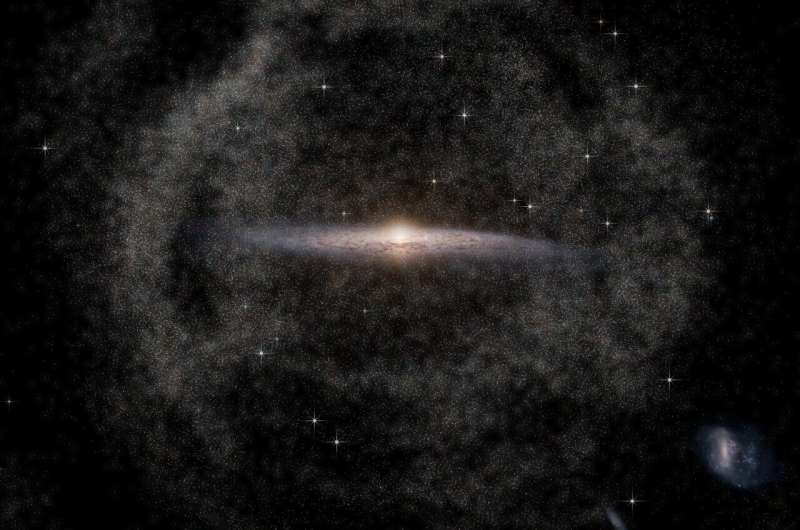
Our galaxy has collided with many others in its lifetime. ESA’s Gaia space telescope now reveals that the most recent of these crashes took place billions of years later than we thought.
The Milky Way has grown over time as other galaxies have approached, collided with, and been torn apart and consumed by our galaxy. Each collision triggered wrinkles that still ripple through different families of stars, affecting how they move and behave in space.
One of Gaia’s aims is to unravel the history of our galaxy by studying these wrinkles—something it’s doing by pinpointing the positions and motions of over 100,000 stars near to our own, a tiny fraction of the about 2 billion sources it observes.
“We get wrinklier as we age, but our work reveals that the opposite is true for the Milky Way. It’s a sort of cosmic Benjamin Button, getting less wrinkly over time,” says Thomas Donlon of the Rensselaer Polytechnic Institute and University of Alabama in Huntsville, U.S., and lead author of the new Gaia study published in Monthly Notices of the Royal Astronomical Society.
“By looking at how these wrinkles dissipate over time, we can trace when the Milky Way experienced its last big crash—and it turns out this happened billions of years later than we thought.”
These galactic wrinkles were only found by Gaia in 2018. That study is the first to accurately determine the timing of the collision that made the wrinkles, by comparing observations with cosmological simulations.
Strange motions
The Milky Way’s halo contains a large group of stars with unusual orbits, many of those thought to have been adopted into our galaxy during an event that astronomers call the “last major merger.” As the name suggests, this is the last time our galaxy experienced a significant collision with another galaxy—proposed to be a massive dwarf galaxy that flooded the Milky Way with stars that pass very close to our galaxy’s center.
Scientists had dated this merger to between 8 and 11 billion years ago, when the Milky Way was in its infancy, and it is known as Gaia-Sausage-Enceladus (GSE). But data from Gaia—released as part of the telescope’s Data Release 3 in 2022—now suggests that another merger may have delivered the unusually moving stars.
“For the wrinkles of stars to be as clear as they appear in Gaia data, they must have joined us less than 3 billion years ago—at least 5 billion years later than was previously thought,” adds co-author Heidi Jo Newberg, also of Rensselaer Polytechnic Institute.
“New wrinkles of stars form each time the stars swing back and forth through the center of the Milky Way. If they’d joined us 8 billion years ago, there would be so many wrinkles right next to each other that we would no longer see them as separate features.”
The finding suggests that rather than these stars originating from the ancient GSE merger, they must have come from a more recent event dubbed the Virgo Radial Merger, which took place less than 3 billion years ago.
Rewriting history
There is evidence for the GSE merger taking place far back in the Milky Way’s history. However, recent work has questioned whether a massive ancient merger is actually needed to explain the properties of the Milky Way as we see it today, and whether all of the stars originally associated with the GSE are from the same merger event.
More information:
Thomas Donlon et al, The debris of the ‘last major merger’ is dynamically young, Monthly Notices of the Royal Astronomical Society (2024). DOI: 10.1093/mnras/stae1264
Provided by
European Space Agency
Citation:
Gaia: Milky Way’s last major collision was surprisingly recent (2024, June 6)
retrieved 6 June 2024
from https://phys.org/news/2024-06-gaia-milky-major-collision.html
This document is subject to copyright. Apart from any fair dealing for the purpose of private study or research, no
part may be reproduced without the written permission. The content is provided for information purposes only.


